Deck 12: Section 1: Vector-Valued Functions
Question
Question
Question
Question
Question
Question
Question
Question
Question
Question
Question
Question
Question
Question
Question
Question
Question
Question
Question
Question
Question

Unlock Deck
Sign up to unlock the cards in this deck!
Unlock Deck
Unlock Deck
1/21
Play
Full screen (f)
Deck 12: Section 1: Vector-Valued Functions
1
Evaluate (if possible) the vector-valued function at the point given. 
A)
B)
C)
D)
E)

A)

B)

C)

D)

E)


2
The graph below is most likely the graph of which of the following equations.. 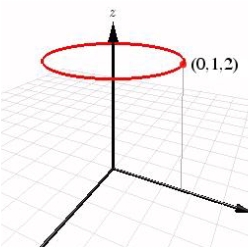
A)
B)
C)
D)
E)

A)

B)

C)

D)

E)


3
Find the domain of the vector-valued function given below. 
A)
B)
C)
D)
E)

A)

B)

C)

D)

E)


4
Match the equation with the graph shown in red below. 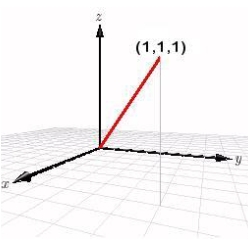
A)
B)
C)
D)
E)

A)

B)

C)

D)

E)


Unlock Deck
Unlock for access to all 21 flashcards in this deck.
Unlock Deck
k this deck
5
Given the vector-valued function below, evaluate  .
. 
A)
B)
C)
D)
E)
 .
. 
A)

B)

C)

D)

E)


Unlock Deck
Unlock for access to all 21 flashcards in this deck.
Unlock Deck
k this deck
6
Determine the interval on which the vector-valued function  is continuous.
is continuous.
A)
B)
C)
D)
E)
 is continuous.
is continuous.A)

B)

C)

D)

E)


Unlock Deck
Unlock for access to all 21 flashcards in this deck.
Unlock Deck
k this deck
7
Find  given the functions below.
given the functions below. 
A)
B)
C)
D)
E)
 given the functions below.
given the functions below. 
A)

B)

C)

D)

E)


Unlock Deck
Unlock for access to all 21 flashcards in this deck.
Unlock Deck
k this deck
8
Find a vector-valued function, using the given parameter, to represent the intersection of the surfaces given below. Surfaces
Parameter

A)
B)
C)
D)
E)
Parameter


A)

B)

C)

D)

E)


Unlock Deck
Unlock for access to all 21 flashcards in this deck.
Unlock Deck
k this deck
9
Suppose the outer edge of a playground slide is in the shape of a helix of radius 10.5 meters. The slide has a height of 2 meters and makes one complete revolution from top to bottom. Find a vector-valued function for the helix.
A)
B)
C)
D)
E)
A)

B)

C)

D)

E)


Unlock Deck
Unlock for access to all 21 flashcards in this deck.
Unlock Deck
k this deck
10
Evaluate the limit given below. 
A)
B)
C)
D)
E) The limit does not exist.

A)

B)

C)

D)

E) The limit does not exist.

Unlock Deck
Unlock for access to all 21 flashcards in this deck.
Unlock Deck
k this deck
11
Find the domain of the vector-valued function given below. 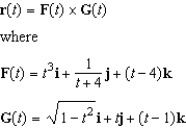
A)
B)
C)
D)
E)

A)

B)

C)

D)

E)


Unlock Deck
Unlock for access to all 21 flashcards in this deck.
Unlock Deck
k this deck
12
Find  given the function r(t) below.
given the function r(t) below. 
A)
B)
C)
D)
E)
 given the function r(t) below.
given the function r(t) below. 
A)

B)

C)

D)

E)


Unlock Deck
Unlock for access to all 21 flashcards in this deck.
Unlock Deck
k this deck
13
Sketch the curve represented by the vector-valued function  and give the orientation of the curve.
and give the orientation of the curve.
A)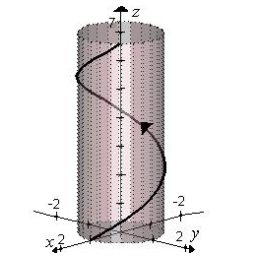
B)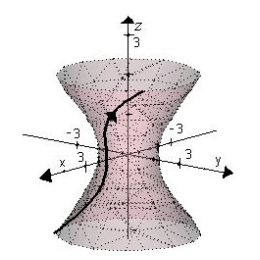
C)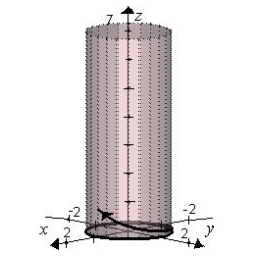
D)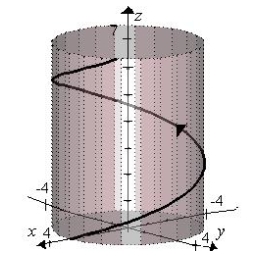
E)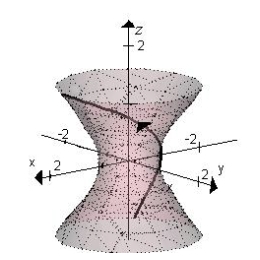
 and give the orientation of the curve.
and give the orientation of the curve.A)

B)

C)

D)

E)


Unlock Deck
Unlock for access to all 21 flashcards in this deck.
Unlock Deck
k this deck
14
Represent the following curve by a vector-valued function. 
A)
B)
C)
D)
E)

A)

B)

C)

D)

E)


Unlock Deck
Unlock for access to all 21 flashcards in this deck.
Unlock Deck
k this deck
15
Evaluate the limit given below. 
A)
B)
C)
D)
E) The limit does not exist.

A)

B)

C)

D)

E) The limit does not exist.

Unlock Deck
Unlock for access to all 21 flashcards in this deck.
Unlock Deck
k this deck
16
Find a vector-valued function, using the given parameter, to represent the intersection of the surfaces given below. Surfaces
Parameter

A)
B)
C)
D)
E)
Parameter


A)

B)

C)

D)

E)


Unlock Deck
Unlock for access to all 21 flashcards in this deck.
Unlock Deck
k this deck
17
Find a vector-valued function, using the given parameter, to represent the intersection of the surfaces given below. Surfaces
Parameter

A)
B)
C)
D)
E)
Parameter


A)

B)

C)

D)

E)


Unlock Deck
Unlock for access to all 21 flashcards in this deck.
Unlock Deck
k this deck
18
Find  given the function r(t) below.
given the function r(t) below. 
A)
B)
C)
D)
E)
 given the function r(t) below.
given the function r(t) below. 
A)

B)

C)

D)

E)


Unlock Deck
Unlock for access to all 21 flashcards in this deck.
Unlock Deck
k this deck
19
Find a vector-valued function, using the given parameter, to represent the intersection of the surfaces given below. Surfaces
Parameter

A)
B)
C)
D)
E)
Parameter


A)

B)

C)

D)

E)


Unlock Deck
Unlock for access to all 21 flashcards in this deck.
Unlock Deck
k this deck
20
Sketch the curve represented by the vector-valued function  and give the orientation of the curve.
and give the orientation of the curve.
A)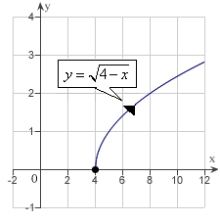
B)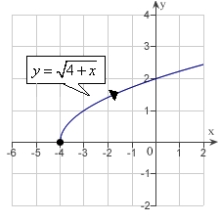
C)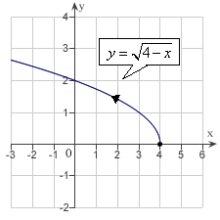
D)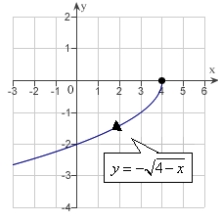
E)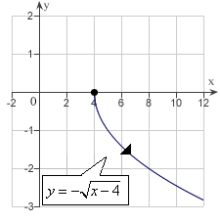
 and give the orientation of the curve.
and give the orientation of the curve.A)

B)

C)

D)

E)


Unlock Deck
Unlock for access to all 21 flashcards in this deck.
Unlock Deck
k this deck
21
Suppose the two particles travel along the space curves  and
and  . A collision will occur at the point of intersection P if both particles are at P at the same time. Find the point of collision.
. A collision will occur at the point of intersection P if both particles are at P at the same time. Find the point of collision.
A)
B)
C)
D)
E)
 and
and  . A collision will occur at the point of intersection P if both particles are at P at the same time. Find the point of collision.
. A collision will occur at the point of intersection P if both particles are at P at the same time. Find the point of collision.A)

B)

C)

D)

E)


Unlock Deck
Unlock for access to all 21 flashcards in this deck.
Unlock Deck
k this deck



